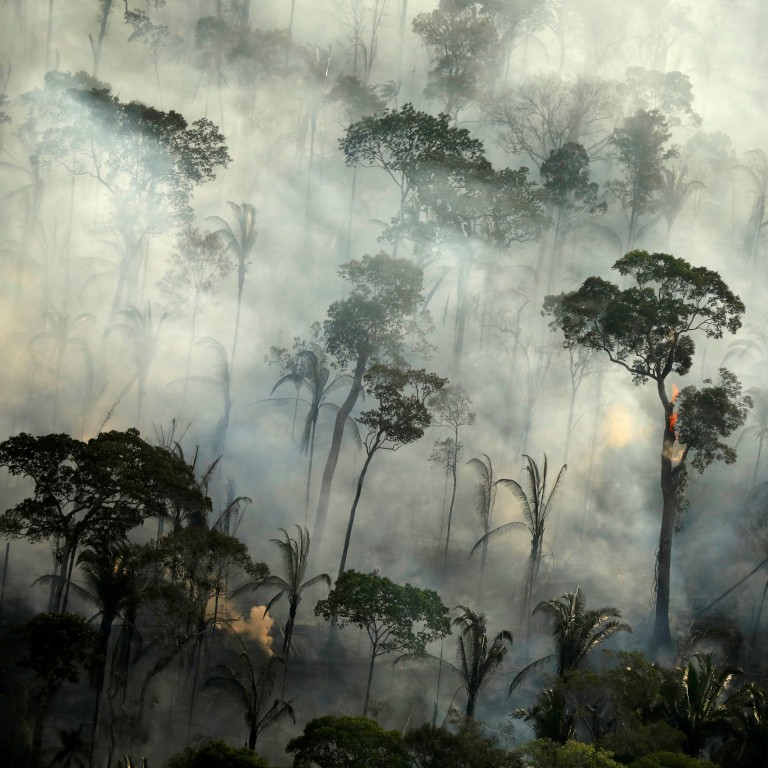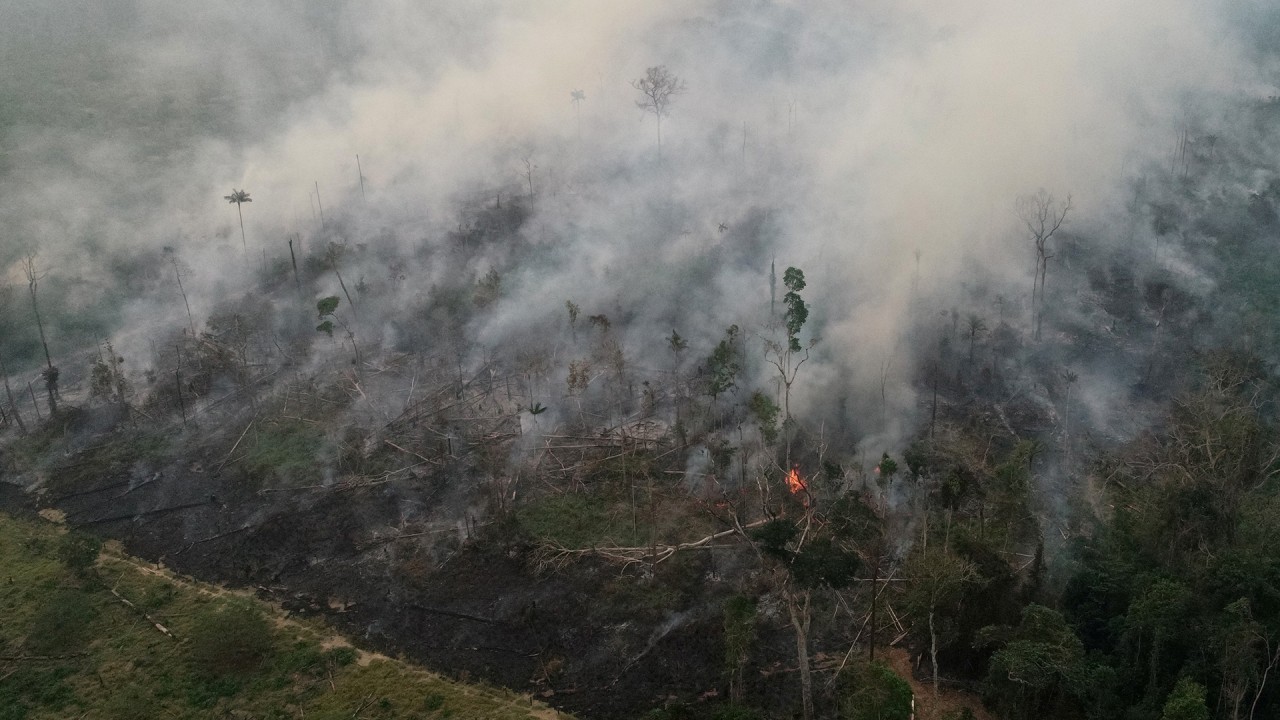
Brazil Amazon fires surge in July, worrying experts
- Environmentalists expressed concern at the rise because August traditionally marks the beginning of the fire season
- The fires are largely set to clear land illegally for farming, ranching and mining
The number of forest fires in the Brazilian Amazon last month rose 28 per cent from July 2019, satellite data showed Saturday, fuelling fears the world’s biggest rainforest will again be devastated by fires this year.
Brazil’s national space agency, INPE, identified 6,803 fires in the Amazon region in July 2020, up from 5,318 the year before, about a 28 per cent increase.
The figure is all the more troubling given that 2019 was already a devastating year for fires in the Amazon, triggering global outcry.
That has put pressure on Brazil, which holds around 60 per cent of the Amazon basin region, to do more to protect the massive forest, seen as vital to containing the impact of climate change.
The fires are largely set to clear land illegally for farming, ranching and mining.
Activists accuse Brazilian President Jair Bolsonaro, a far-right climate change sceptic, of encouraging the deforestation with calls to open up the rainforest to agriculture and industry.
With world distracted, the Amazon rainforest continues to burn
Under international pressure, Bolsonaro has deployed the army to fight the fires and declared a moratorium on burning. But activists say that does not go far enough to address the roots of the problem.
Fires rose 77 per cent on indigenous lands and 50 per cent on protected nature reserves from July 2019, environmental group Greenpeace said, showing how illegal activities are increasingly encroaching on those areas.

On July 30 alone, satellites detected 1,007 fires in the Amazon, INPE said.
That was the worst single day for fires in the month of July since 2005, said Greenpeace.
“More than 1,000 fires in a single day is a 15-year record and shows the government’s strategy of media-spectacle operations is not working on the ground,” Greenpeace spokesman Romulo Batista said in a statement.
“On paper, the fire moratorium prohibits burning, but it only works if there is also a response on the ground, with more patrols. Criminals aren’t known for obeying the law.”
Instead, the Bolsonaro administration has slashed the budget, staff and programmes of environmental authority IBAMA.
‘Terrifying’: Amazon rainforest could collapse in 50 years
“Everything that was working was thrown out the window,” Erika Berenguer, an Amazon ecologist at Oxford and Lancaster Universities, said.
Fire season in the Amazon typically runs from around June to October.
But fires are just part of the deforestation picture.

01:54
The aftermath of Amazon rainforest fires
The rest of the year, ranchers, farmers, miners and land speculators are clearing forest and preparing to burn it.
The first six months of 2020 were the worst on record for deforestation in the Brazilian Amazon, with 3,069 sq km cleared, according to INPE data – an area bigger than the nation of Luxembourg.
If a significant portion of those felled trees burn in 2020, the result could be catastrophic, experts warn.
“I think August will be the make-or-break month,” said Berenguer.
Last year, the number of fires surged nearly 200 per cent year-on-year in August, to 30,900, sending a thick haze of black smoke all the way to Sao Paulo, thousands of kilometres away, and causing worldwide alarm.
Fires in Amazon rainforest are being fuelled by US-China trade war, experts say
The number of fires has fallen since then, under increased scrutiny and pressure – including from companies and investors worried about the impact on Brazil’s brand.
But Berenguer said it was a matter of time before the newly deforested land went up in flames in the name of farming and ranching.
“It’s an economic investment to deforest. It’s expensive … You need heavy machinery: bulldozers, tractors, people, diesel,” she said.
“You don’t deforest to leave all those trees on the ground. You need to burn it, because you need to recover your investment.”
Furthermore, US space agency Nasa warned last month that warmer ocean surface temperatures in the North Atlantic mean the southern Amazon is facing a major drought this year.
It said that made “human-set fires used for agriculture and land clearing more prone to growing out of control and spreading.”
“Conditions are ripe,” it said.
Exacerbating the situation this year, experts say the resulting smoke risks causing a spike in respiratory emergencies in a region already hit hard by Covid-19.
Brazil has more infections and deaths from the new coronavirus than any country except the United States: more than 2.6 million and 92,000, respectively.

.png?itok=arIb17P0)